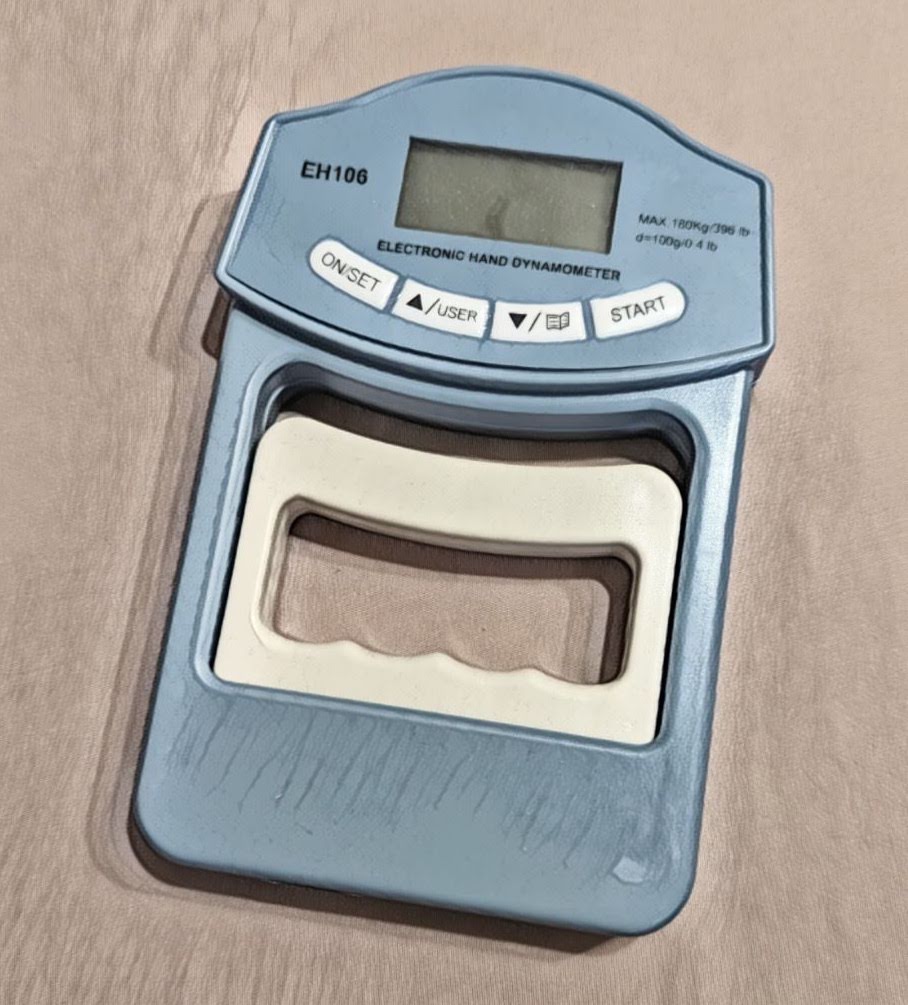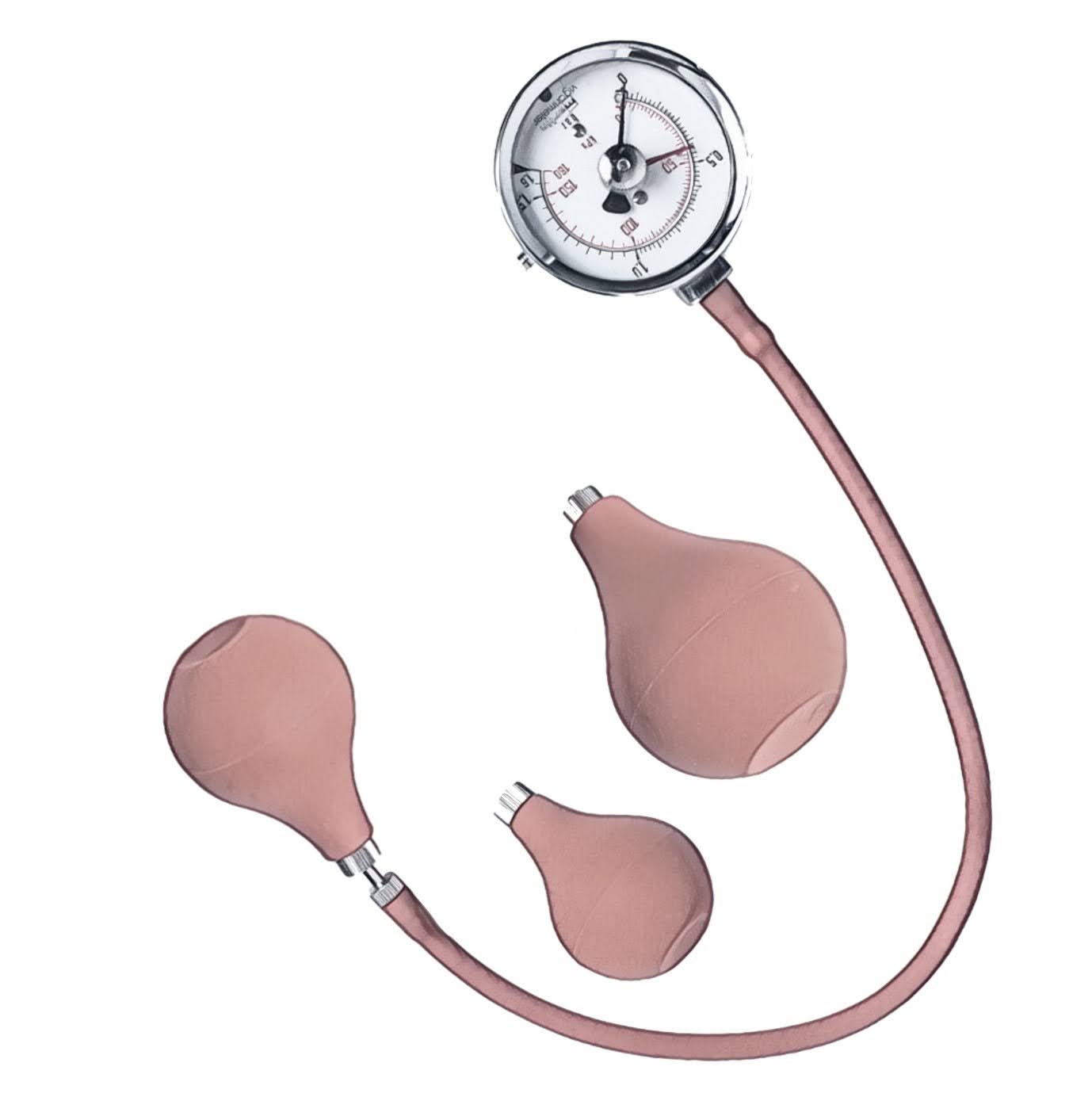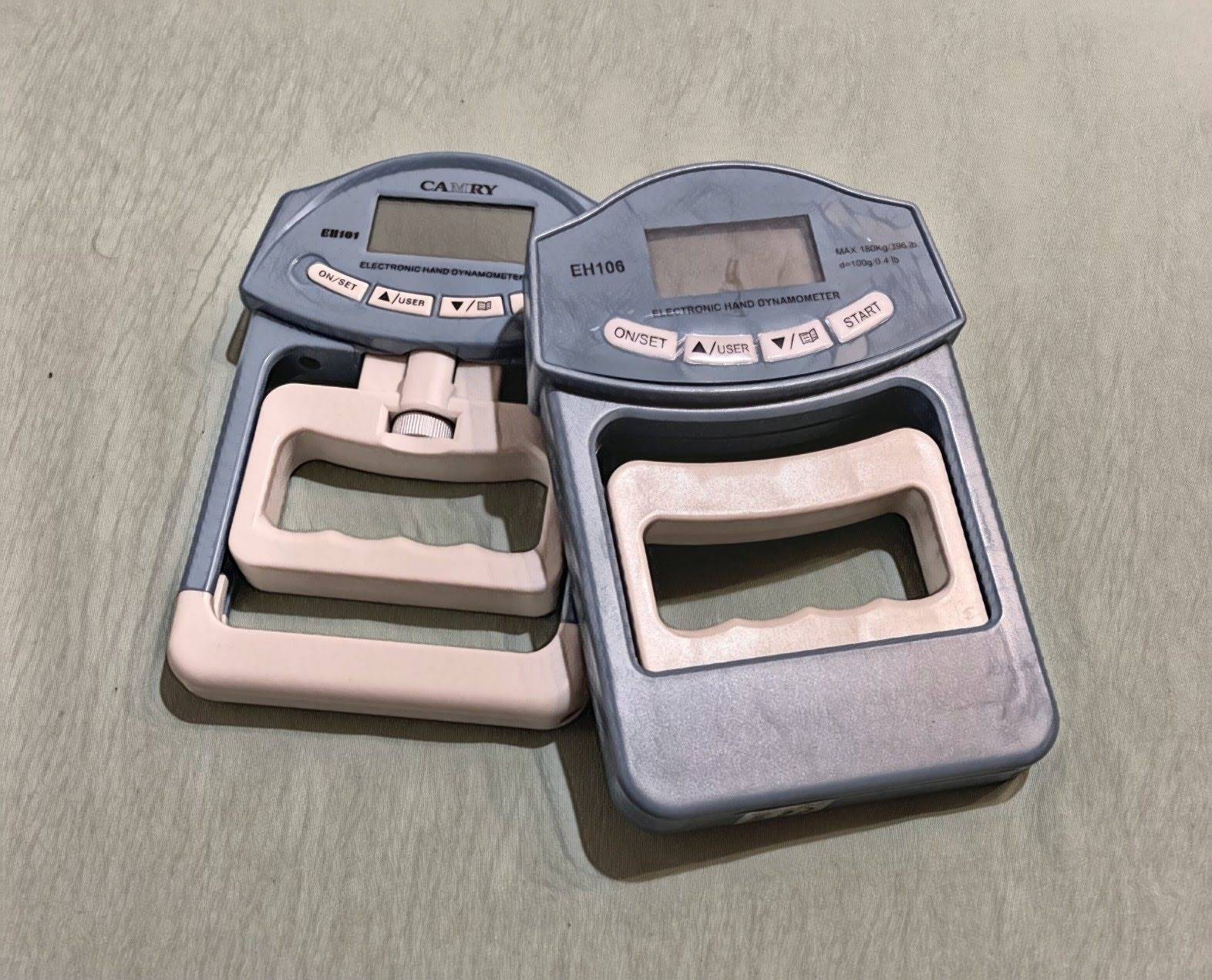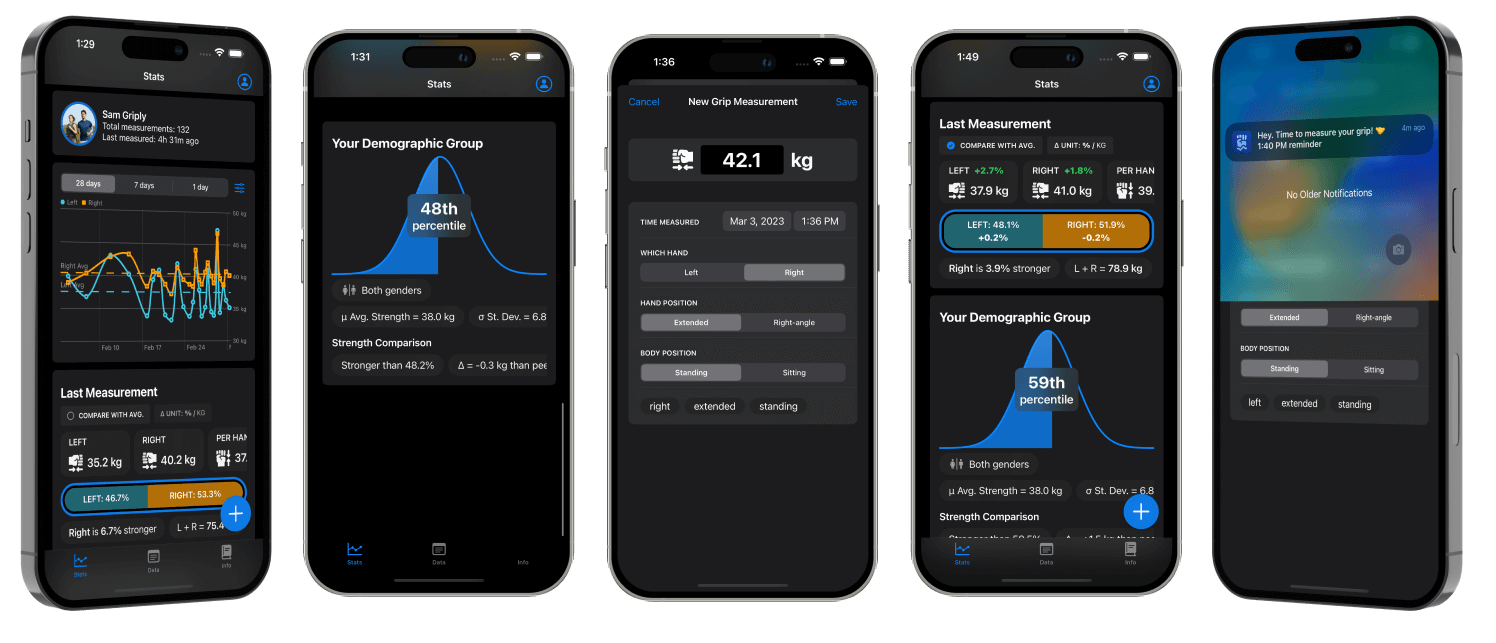Categorization
Here are the different types of dynamometers based on:
- the type of sensor,
- whether they are isometric (meaning that as you squeeze the dynamometer does not move at all, or at least not in any perceptible manner).
1. Strain gauge with spring (not isometric).
This is the type where when you squeeze the handle moves as a stiff spring gets squeezed. This is the most common and most affordable type of dynamometer.
Example: CAMRY EH101.

2. Strain gauge without spring (isometric).
The handle does NOT move any perceptible amount when you squeeze the handle.
Example: Takei 5401, EH106, GM-150.

3. Mechanical gauge with or without spring.
The handle can be isometric or not, however the output is shown on an analogue gauge instead of a digital one. These are generally affordable and are still reasonably reliable. Please know, though, that if you squeeze really fast then the gauge that's supposed to record your max strength can overshoot your actual max strength.
Example: Baseline Smedley Spring Dynamometer.

4. Hydraulic dynamometer (isometric).
Instead of a strain gauge this type of dynamometer uses a hydraulic mechanism to measure grip strength. This type of dynamometer can use either an anlogue gauge or a digital display.
Example: Jamar hydraulic dynamometer.

5. Pressure gauge (isometric).
Unlike the previous types where the output can be measured as a force, represented in newtons or kilograms or pounds, this type of dynamometer measures how much pressure you are able to generate by squeezing a special rubber ballon connected to a pressure sensor. Some early research in hand grip was done with these devices, however, they are less common today.
Example: Martin Vigorimeter.

Which type is best for me?
All the above types of dynamometers are acceptable for personal use, however for better comparison with demographic studies we recommend using isometric dynamometers of the type that measure force (not pressure).
Some dynamometers are less ergonomic than others and using your full grip strength might cause discomfort in your palm or fingers. In that case, using weightlifting or cycling gloves can help alleviate the discomfort and make it easier to consistently make measurements.


